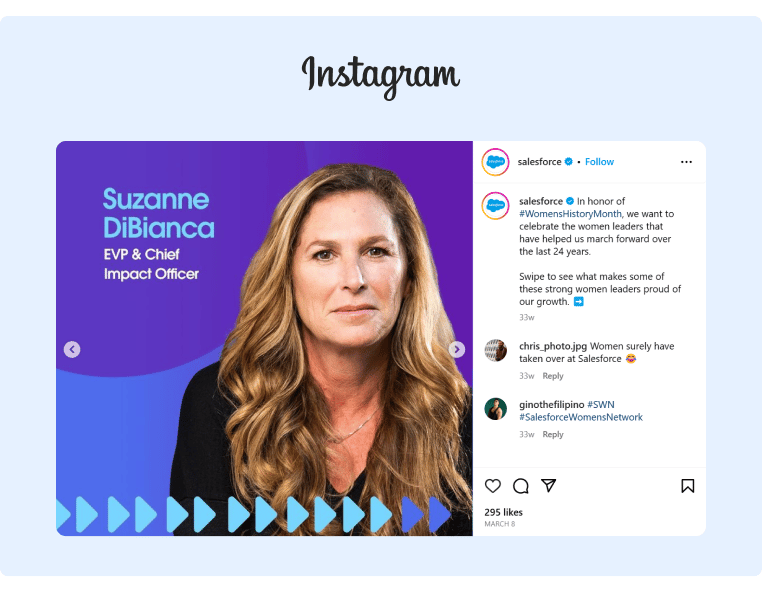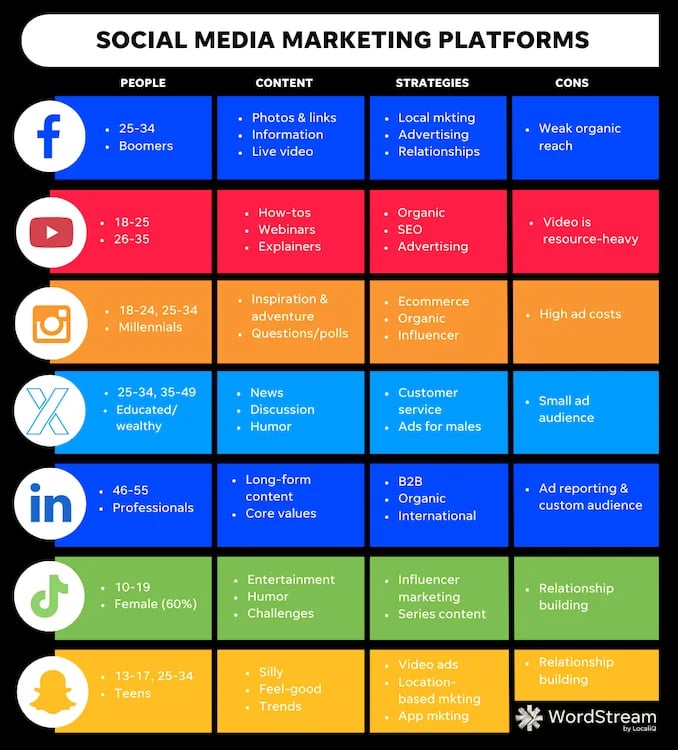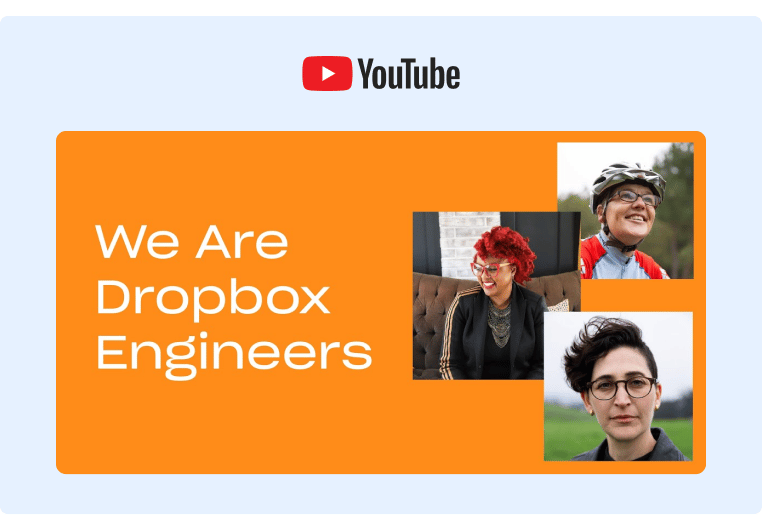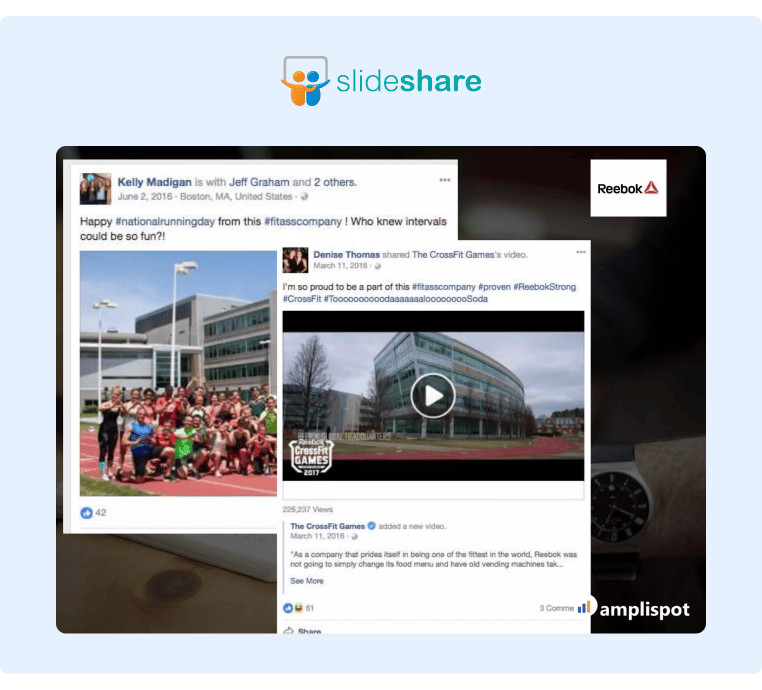Essential B2B Social Media Marketing Best Practices
Social media is not only critical for business-to-consumer (B2C) marketing but business-to-business (B2B) marketing, too.
Social media B2B statistics speak for themselves. 84% of B2B executives admit social media plays a key role in their purchase decisions, while another 92% of B2B buyers use social platforms to engage with sales industry thought leaders.
So, what makes a B2B brand successful on social media? Why do some B2B brands rise to the front of the pack while others get lost in the crowd?
Successful brands adhere to B2B social media marketing best practices to give them a competitive edge. Here’s the best part: it’s never too late to start implementing these best practices!
In this article, we’ll break down B2B social media marketing best practices to help you grow your brand. We’ll also share how to leverage B2B social media content, how to craft a B2B social media strategy along with trends to watch, and B2B social media strategy examples.
Let’s first briefly review what B2B social media marketing is.
What Is B2B Social Media Marketing?
B2B social media marketing is a marketing strategy for B2B brands. B2B brands use social media platforms to market their products or services to other businesses. Popular platforms for B2B social media marketing are LinkedIn, Facebook, and Instagram.
B2B Social Media Marketing Best Practices
B2B social media best practices differ from the typical B2C strategies that most marketers are familiar with. But, if you apply those best practices, you can effectively leverage platforms like Facebook, LinkedIn, YouTube, and X (formerly Twitter) to generate leads and cultivate professional relationships—all within the social media sphere.
Here are four social B2B social media marketing best practices.
-
Speak To People, Not Businesses. Although you’re targeting businesses with your product/service, it’s important to remember to speak to people, not businesses. You’re not talking to the brands, you’re talking to the individuals behind those brands. Keep the tone of your content, comments, and responses human and less formal.
-
Educate Your Audience, Make It Easier For Them to Do Their Job. Focus on providing your audience with content that not only entertains, but educates and shows how your product or service can benefit them. Relevant thought leadership content along with how-to videos are both great ways to help your audience do their jobs.
-
Reply to All Comments and DMs. Cultivating engagement is crucial. You can’t simply post content and expect your social media marketing efforts to grow your brand. Replying to comments and DMs helps increase engagement, which in turn, bolsters brand reputation and brand awareness. Try to respond to social media messages and comments within 24 hours.
-
Comment on Other People’s Posts. In addition to replying to comments on your own posts, take the time to comment on other people’s posts, too. Engaging on others’ posts will show you’re not just posting for your own benefit, you actually care about others, too. It’s also a great way to boost brand awareness. For example, if you comment on a LinkedIn post, and that post is then shared, more people will be exposed to your comment.
Now let’s take a look at how brands are leveraging B2B social media content.
Leveraging B2B Social Media Content
Utilizing B2B social media content ideas that engage and resonate with your target audience can also help boost your brand awareness. In fact, a good mix of long and short content ideas can produce great results. The former includes thought leadership articles, case studies, infographics, and interactive polls. For short content, you can focus on striking visuals, impactful video clips, and concise, compelling copy.
Consider these B2B social media marketing examples. A B2B software company leverages LinkedIn to showcase a case study with a notable B2B client; or a B2B cloud-based software company like Salesforce uses Instagram to showcase its employees, highlight company culture, and celebrate staff achievements. Potential B2B buyers can see what it’s like to work for (and work with) these companies, and in turn, be more likely to want to do business with them.

Source: Salesforce
Now let’s move on to crafting your B2B social media strategy.
Crafting a B2B Social Media Strategy
Effective B2B social media marketing requires a robust strategy. Let’s use a hypothetical example to understand what a B2B social media strategy looks like from start to finish.
Let’s say a B2B consulting firm identifies its target audience as small business owners who are seeking financial advice. It sets specific goals to increase website traffic by 30% and generate 50 leads per month through social media campaigns.
Based on this strategy, the firm executes a series of campaigns, including sharing insightful content, engaging relevant social media groups, using interactive content and chatbots, as well as reaching out to potential leads. Finally, it uses analytics to study the performance of each of these measures and makes changes accordingly.
Now, let’s go over the steps it takes to create a B2B social media strategy.
1. Defining Your Target Audience
To understand your target audience, you need to determine the industries that will benefit the most from your products or services. Are you catering to technology companies, healthcare providers, or manufacturing firms?
Next, create detailed customer personas. These fictional representations of your ideal customers will cover their demographics, pain points, goals, and challenges. Finally, study your competitors and identify their target audience(s). This can help you refine your ideal audience.
2. Setting Clear Objectives
Your B2B social media strategy should have specific and measurable objectives. These objectives may include lead generation, brand awareness, thought leadership, or engagement.
3. Selecting the Appropriate Channels To Use
Not all social media platforms are created equal, and your choice of channels should align with your target audience and objectives. For example, LinkedIn is ideal for B2B networking, lead generation, and thought leadership due to its identity as a platform for business professionals. On the other hand, X (formerly Twitter) is better for real-time updates, industry news sharing, and engagement with broader audiences. If you want to go in-depth about a product, then YouTube might be the right space for you.
Source: WordStream
4. Devising Social Media Campaigns
When planning a social media campaign, begin by defining its goals, followed by the creative process of making effective copy and visuals. Staying on top of B2B social media trends will help you figure out the best content to post.
5. Creating a Content Calendar
A content calendar can help maintain consistency and organization in your social media efforts. You can use it to plan the type of content and how frequently to post. You can even use a social media management tool to schedule posts in advance.
6. Defining Metrics to Monitor Your Campaigns
Measuring your key performance indicators (KPIs) such as website traffic, lead conversion rates, or engagement metrics, will help you track what’s working and what’s not. You can modify your efforts based on these insights. There are several analytics tools provided by social media platforms or third-party applications to track such progress.
B2B Social Media Strategy Trends
A B2B marketing trend that you can leverage is account-based marketing (ABM). This strategy involves targeting specific high-value accounts with personalized marketing efforts. By aligning your B2B social media strategy with ABM, you can engage key decision-makers directly and increase conversion rates.
Another crucial weapon in your social media strategy arsenal is employee advocacy. Employee advocacy is when you encourage your employees to become advocates for your brand. When employees share your content, there’s a better chance of it making a strong impression.
For example, Starbucks harnesses the power of employee advocacy by having easily accessible social media guidelines for its employees. This lets employees know exactly what type of content to create and how to create it to appeal to potential B2B partnerships.
Let’s now move on to some examples of effective B2B social media strategies.
B2B Social Media Strategy Examples
Before we jump into some real-life examples, let’s look at a hypothetical case for a strong B2B social media strategy example.
Consider a B2B SaaS company that specializes in project management software. It could implement a social media strategy that revolves around thought leadership by regularly publishing in-depth articles on project management best practices and sharing them on LinkedIn and X (formerly Twitter).
It can also tap into employee advocacy by having its employees actively engage with these posts, offering their perspectives and insights. This is a strategy the company can leverage to position itself as an authority in its niche, leading to brand awareness and inbound inquiries.
Now let’s take a look at a real-life example. One of our favorite B2B social media examples comes from Dropbox, the digital content-sharing and hosting platform. Dropbox used the hashtag #LifeInsideDropbox to share employee stories and content, letting everyone know about its employees’ enthusiasm for the brand.

Source: YouTube
Another real-life example is Reebok, who’s employee advocacy program revolves around hiring people who are passionate about sports and are passionate social media users. This strategy helps Reebok build a pool of powerful brand advocates.

Source: Slideshare
Companies that help their teams become employee advocates naturally extend their reach, increase engagement, and subsequently build better customer relationships.
A Hack for Better B2B Social Media Results
For B2B companies to effectively wield the power of social media, a combination of best practices are needed. But, we have a hack to make it simpler, faster, and more effective. Consider using GaggleAMP for better B2B social media results.

GaggleAMP is an example of an employee advocacy tool that allows you to provide personalized engagement activities on social media for employees at scale. GaggleAMP also provides a detailed analytics dashboard with metrics like total brand reach, engagement, and even a breakdown of the most successful social channels, brand advocates, and content.
Schedule a demo today to see how GaggleAMP can help make your social media strategy more effective.










